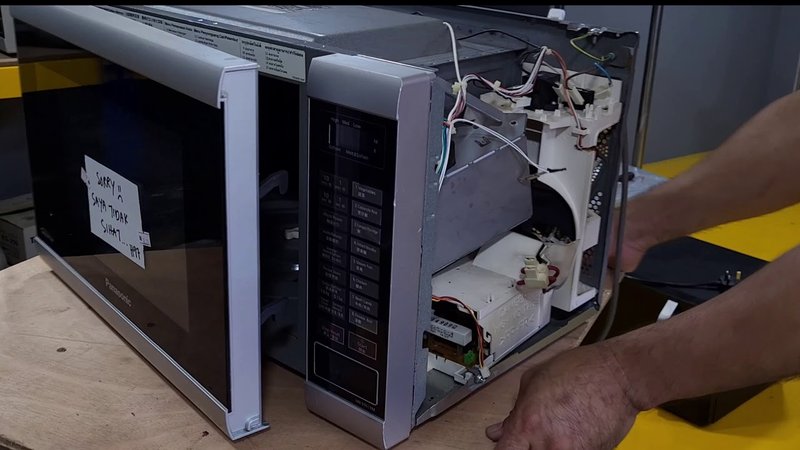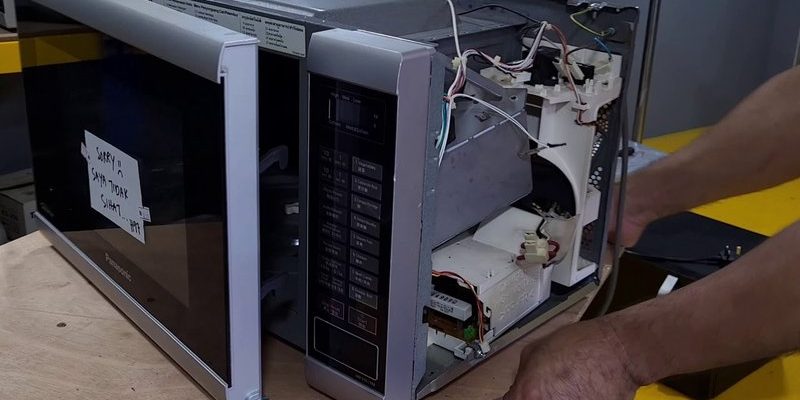
You might be wondering what to do when you see this code. Small issues can often lead to bigger problems if not handled properly, and you certainly wouldn’t want your trusty kitchen companion to fail you. The LE error is specifically related to the door’s latching system, indicating that the control system isn’t recognizing the door as fully closed. This situation not only affects the microwave’s performance but also poses a safety risk, as microwaves aren’t supposed to operate with the door open. Let’s dive deeper into understanding this error and what steps you can take before deciding if it’s time to call in a professional.
Understanding the LE Error Code
So, what exactly does the LE error code mean? LE stands for “Latch Error,” and it’s all about the door of your microwave. Imagine trying to use your microwave with the door slightly ajar. It wouldn’t be safe, right? The microwave’s safety mechanism kicks in to prevent it from operating unless the door is fully secure. This error indicates that the microwave thinks the door isn’t properly latched, even if it appears to be closed from the outside.
Why does this happen? Well, several components work together to ensure the door is properly latched. There’s a latch hook, a switch, and sometimes even a tiny sensor. If any of these components malfunction, your microwave “thinks” the door is open. This happens if the latch hook is misaligned or if the switch is faulty. Over time, wear-and-tear or food debris might cause these parts to fail or not connect properly.
Think of it like a car door that doesn’t shut snugly; it might look closed but isn’t really. If you notice the LE code, it could be a simple fix like ensuring nothing is blocking the door from closing fully. On the other hand, it might require a more detailed inspection of the internal components. Pay close attention to any visible wear or obstruction when opening and closing the door. If the code persists, it might be time to proceed cautiously and consider expert help.
Initial Checks and Fixes
Before rushing to the phone to call in for help, there are some basic checks you can perform yourself. First, make sure there’s nothing obstructing the door seal. Sometimes, crumbs or food particles can lodge themselves in places they shouldn’t be, leading to a poor seal. Carefully clean around the door’s edge and the latch area with a gentle cloth. It’s much like wiping your car windshield to get a clearer view ahead.
Secondly, inspect the door latch itself. Does the door seem loose or wobbly when you open it? If the latch looks out of place or doesn’t seem to catch properly when you close the door, this could be the culprit. Lightly cleaning it or realigning the latch manually might solve the issue. But remember, if the components appear damaged or you feel unsure about meddling further, it’s always best to play it safe.
Decision time: If your microwave still displays the LE error after these checks, this is the stage where you consider contacting a technician. There might be an internal issue that requires professional tools and expertise. Attempting to repair electronic components without the proper knowledge can not only worsen the problem but also pose a safety hazard.
When to Call a Professional
Okay, you’ve done the basic checks and the pesky LE code is still flashing. At this point, reaching out to a certified technician is your best bet. Why? Because they have the specialized knowledge and tools to safely and accurately assess the root cause of the error. A technician can disassemble the microwave to inspect the door switch, latch, or other internal components without the risk of damaging the unit further.
Sometimes, a microwave repair might seem daunting, with parts that are hard to reach or intricate mechanisms that aren’t instantly understandable. It’s like a puzzle that only experienced hands should solve. Plus, dealing with microwaves involves handling potentially dangerous components, such as high-voltage capacitors, even after unplugging the device.
So, what’s the takeaway? If after your initial assessment and cleaning, the error persists, or if you feel uncertain at any point about what you’re doing, that’s your cue to call in a professional. It ensures the safety of you and your appliance.
Preventative Measures to Avoid Future Errors
Now that you know what to do when the LE error code appears, let’s talk prevention. Like any trusty tool, your microwave needs some tender loving care to keep functioning optimally. Regular maintenance can help you prevent these pesky errors from cropping up in the future.
Consider making it a habit to clean your microwave regularly. By keeping the door, latch, and seal areas free of debris, you minimize the chances of anything obstructing the door. Think of it like brushing your teeth daily to avoid cavities—simple maintenance goes a long way.
Another preventative step involves ensuring a gentle touch when using your microwave. Slamming the door shut might seem like a no-big-deal action, but over time, it can misalign the latch or wear out switches. Treat the door like you would any other delicate piece of machinery—gently and with care.
Finally, stay informed about your appliance. Read its manual and understand its warning signs. If you notice something off, such as unusual noises or difficulty with the door, don’t ignore it. Addressing minor issues early can prevent bigger headaches down the road.
In summary, while encountering the LE error might seem daunting at first, understanding its causes and knowing when to call in a professional can make all the difference. Keep your Panasonic microwave in tip-top shape with routine care, and you’ll enjoy many more years of culinary convenience.
